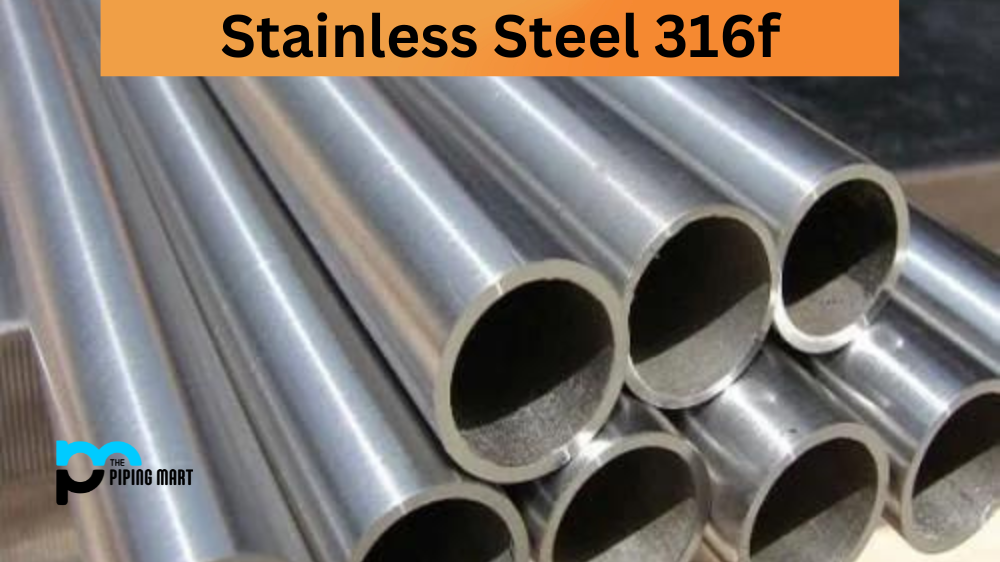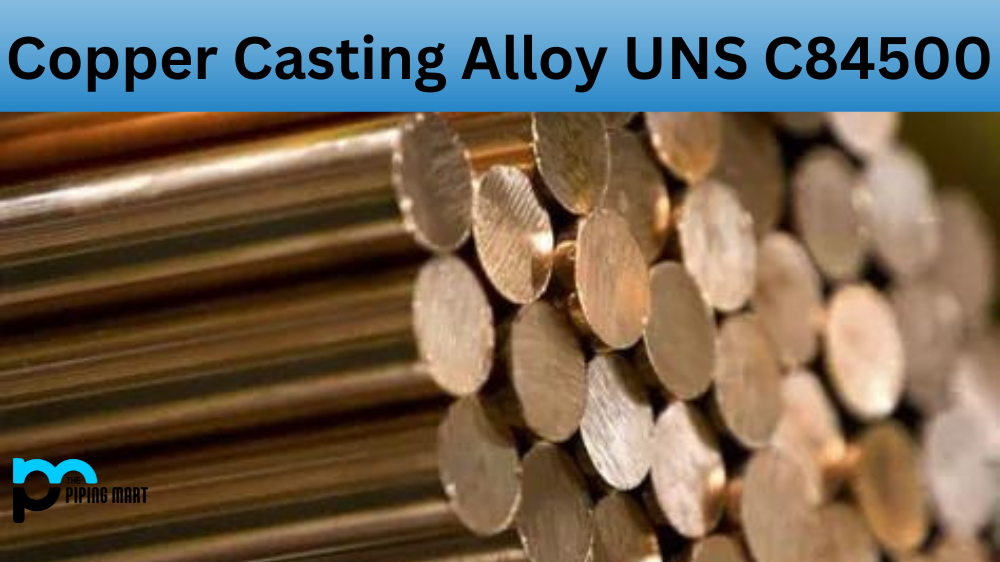Stainless steel is an alloy known for its corrosion resistance, durability, and strength. One popular stainless steel variant is 316f, which has a unique composition and properties that make it suitable for specific uses. This blog post will look in-depth at stainless steel 316f, including its composition, mechanical and physical properties, uses, corrosion resistance, heat treatment, machining, and welding.
Stainless Steel 316f Composition
Stainless steel 316f is a low-carbon modification of the popular 316 grade. It comprises iron, carbon, silicon, manganese, phosphorus, sulfur, chromium, nickel, and molybdenum. Adding molybdenum gives 316f better resistance to corrosion and pitting, making it ideal for use in harsh environments.
| Element | Content (%) |
|---|---|
| Iron, Fe | Balance |
| Chromium, Cr | 16-18 |
| Nickel, Ni | 10-14 |
| Manganese, Mn | 2 |
| Molybdenum, Mo | 1.75-2.5 |
| Silicon, Si | 1 |
| Phosphorous, P | 0.2 |
| Sulfur, S | 0.10 (min) |
| Carbon, C | 0.08 |
Stainless Steel 316f Mechanical Properties
Stainless steel 316f has excellent mechanical properties, including high tensile and yield strength. It also has good ductility and elongation, enabling it to withstand stress without cracking. The ultimate tensile strength of stainless steel 316f is 580 MPa, while the yield strength is 290 MPa.
| Properties | Metric | Imperial |
|---|---|---|
| Tensile strength | 585 MPa | 84800 psi |
| Yield strength | 260 MPa | 37700 psi |
| Elongation at break (in 50 mm) | 60% | 60% |
| Hardness, Rockwell B | 85 | 85 |
Stainless Steel 316f Physical Properties
The physical properties of stainless steel 316f include a 7.98 g/cm3 density and a melting point of 1370-1400°C. It has a thermal conductivity of 16.3 W/(m. K), a specific heat of 500 J/(kg. K), and an electrical resistivity of 0.74 ×10^-6 Ω.m.
Stainless Steel 316f Equivalent
- AMS 5649
- SAE 30316F
Stainless Steel 316f Uses
Stainless steel 316f is used in various chemical, marine, and food industries. It is popular for making surgical instruments, pharmaceutical processing equipment, and implants. Its excellent corrosion resistance makes it suitable for harsh environments, including exposure to seawater, acids, and alkalis.
Stainless Steel 316f Corrosion Resistance
Stainless steel 316f offers excellent corrosion resistance due to its composition, especially the addition of molybdenum. It can withstand exposure to corrosive environments, including seawater, acids, and alkalis. However, prolonged exposure to high temperatures can reduce its corrosion resistance, hence the need for heat treatment.
Stainless Steel 316f Heat Treatment
Heat treatment can improve the strength and corrosion resistance of stainless steel 316f. The recommended treatment is annealing at a temperature range of 1010-1120°C, followed by cooling in air or water. This process can also improve flexibility and toughness.
Stainless Steel 316f Machining
Stainless steel 316f is challenging to machine due to its hardness and toughness. However, it is possible to achieve precise machining results using high-speed steel cutting, carbide, and ceramic tools. It is also essential to use high-quality coolants, lubricants, and cutting fluids to prevent overheating and tool wear.
Stainless Steel 316f Welding
Stainless steel 316f is well suited for welding due to its low carbon content. It can be welded using various methods, including gas tungsten arc welding (GTAW), gas metal arc welding (GMAW), and shielded metal arc welding (SMAW). However, following the recommended welding parameters is essential to avoid cracking and ensure a high-quality weld.
Conclusion:
Stainless steel 316f is a unique variant of stainless steel that offers excellent corrosion resistance, strength, and durability. Its composition, mechanical and physical properties make it suitable for various chemical, marine, and food processing applications. However, its machining and welding can be challenging, requiring proper tooling, coolants, and welding parameters. Following the recommended heat treatment and machining/welding parameters can achieve precise and high-quality results while using this excellent material.

Abhishek is a seasoned blogger and industry expert, sharing his insights and knowledge on various topics. With his research, Abhishek offers valuable insights and tips for professionals and enthusiasts. Follow him for expert advice on the latest trends and developments in the metal industry.




